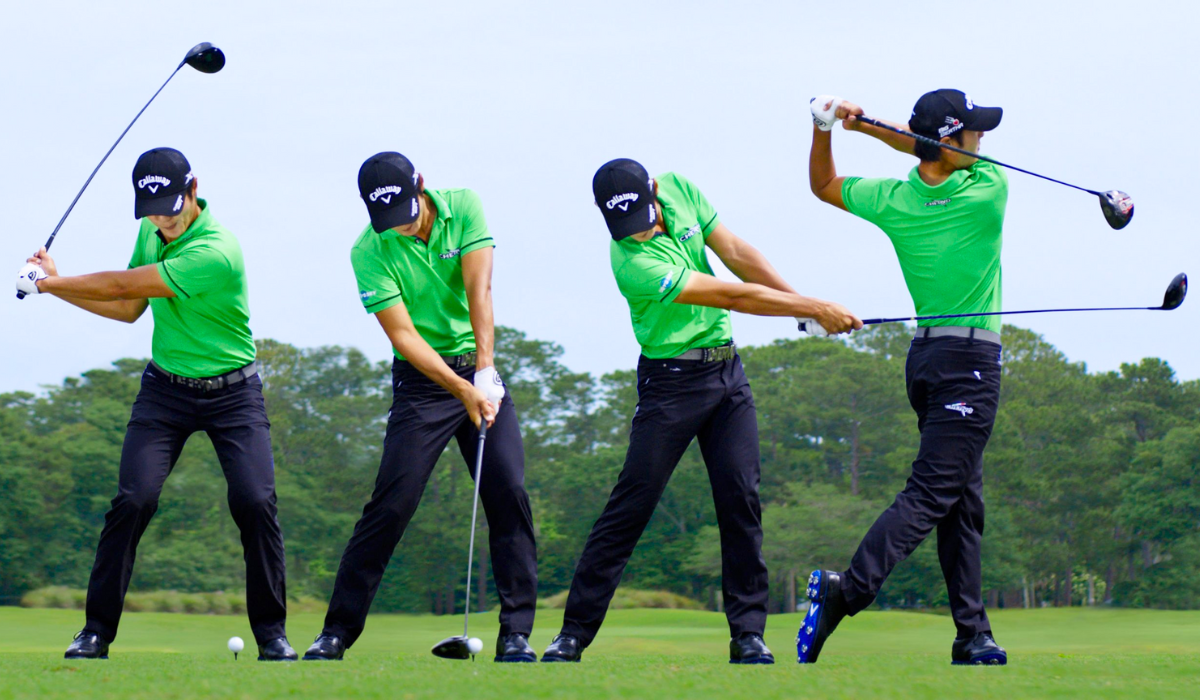Clothes
How to Pack Smart for a Golf Holiday
Explore 33,000+ golf courses in 180 countries.
Follow the latest news and trends in golf.
Connect with like-minded golfers.
Find everything you need for your golf equipment and gear needs.
Travel, golf resorts, lifestyle, gear, tour highlights and technology.
All Square
Suggestions
Clothes
How to Pack Smart for a Golf Holiday
Course Reviews
Weekend Golf Escapes by Car from Luxembourg
Course Reviews
Best Clubhouse Restaurants in Europe
Course Reviews
Your Top Destinations For a Last-Minute Christmas Golf Getaway in Europe
Clubs
Hideki Matsuyama WITB Behind His 2025 Hero World Challenge Victory
Amateur Golf
Europe’s Best Pro-Am Golf Events for Amateurs
Course Reviews
Top 10 Par‑3s You’ll Never Forget
Course Reviews
The Architects Behind Europe’s Most Iconic Courses
Destinations
Europe’s Best Resorts for Couples
Contests
The Skins Game: Results & Overview
Community
Rewilding the Rough: Nature-First Golf Design
Course Reviews
The History Behind the Ryder Cup Courses
Abu Dhabi HSBC Championship
Aaron Rai’s Winning WITB at Abu Dhabi HSBC Championship
Course Reviews
The Best Golf Courses Near Pinehurst That Aren’t Pinehurst No. 2
Course Reviews
The Els Club Vilamoura: Golfing Grandeur in the Algarve
Clubs
The Best Golf Wedges of 2025
Course Reviews
A Tour of Texas’s Finest Golf Courses
Course Reviews
Fairmont La Hacienda: Redefining Luxury on the Costa del Sol
Amateur Golf
Unveiling the Best Celebrity Golfers
Accessories
The Best Cart Golf Bags
All Square
Vietnam Golf Gems: Top Courses on an All Square Journey

Golf may seem like a game of finesse and precision, but behind every smooth swing lies a foundation of strength. Building physical power doesn’t just increase your driving distance — it also improves your control, balance, and endurance throughout a round. Whether you’re an amateur trying to hit straighter shots or a professional refining consistency, strength training plays a crucial role in elevating your performance.

In golf, strength is the silent force behind every great shot. It stabilises your posture, protects your joints, and helps you generate clubhead speed. According to research published in the Journal of Strength and Conditioning Research, golfers who followed structured strength programs increased their driving distance by an average of 5–8%. Stronger muscles also mean better energy transfer during the swing — what sports scientists call the “kinetic chain” — allowing power to flow efficiently from your legs through your core and into your hands.

If there’s one area to prioritise, it’s your core. The golf swing is a complex rotational movement that demands both mobility and strength in the abdominals, obliques, and lower back. A stable core anchors your swing, preventing unnecessary motion and helping maintain posture throughout your stroke. Exercises such as planks, cable rotations, and stability ball rollouts are particularly effective.
Many golf trainers now emphasise anti-rotation exercises — movements that resist twisting — to build the stability needed to control swing power. For example, the Pallof press trains your body to maintain control when faced with rotational forces, directly translating to greater accuracy and balance during play.

The real power in golf comes from the ground up. The hips, glutes, and legs act as your engine, producing the torque that fuels your swing. Strong lower-body muscles allow for a more explosive hip rotation and better stability at impact.
Squats, lunges, and deadlifts are essential, but even bodyweight variations can deliver results if performed with proper form. Plyometric exercises such as jump squats or box jumps develop fast-twitch muscle fibers, improving how efficiently your body transfers energy during the downswing. A study from the Titleist Performance Institute (TPI) found that golfers with stronger hip extensors and rotators consistently achieved higher swing speeds and longer drives.

While lower-body strength generates power, the upper body channels it. A balanced routine should include exercises targeting the shoulders, chest, arms, and back — particularly the rotator cuff muscles, which stabilise the shoulder joint through the swing’s full range of motion.
Pull-ups, push-ups, and dumbbell rows build control and endurance. Rotator cuff exercises using resistance bands are vital for preventing injuries that can derail your game. Functional movements, such as single-arm cable pulls mimicking the swing path, enhance coordination between your arms and torso, creating smoother transitions and more reliable shot shaping.

Raw power without flexibility can lead to stiffness, restricted motion, and injury. Flexibility allows a full, unhindered swing arc, while mobility ensures that each joint moves correctly through its range. Incorporating dynamic stretching, yoga, and foam rolling can help maintain this balance.
Golfers like Rory McIlroy and Brooks Koepka have credited their flexibility and mobility routines as key to maintaining explosive strength while staying injury-free. A few minutes of hip, shoulder, and thoracic spine mobility work each day can make a measurable difference in your performance.

Golf might not seem like an endurance sport, but walking 18 holes while maintaining focus and power requires stamina. Cardiovascular conditioning — such as cycling, swimming, or interval training — helps sustain energy levels and mental sharpness.
Equally important is recovery. Strength gains happen when muscles repair after stress, so rest days, sleep, and proper nutrition are critical. Hydration and balanced meals rich in protein, complex carbs, and healthy fats support muscle repair and energy levels during long rounds.

To get results without risking injury, a golf-specific strength plan should follow a progression:
Working with a golf fitness professional or a certified TPI trainer can help personalise the program to your swing mechanics and body type.
Strength training for golf isn’t about bulking up — it’s about developing functional power, stability, and endurance that translate directly to your game. By building strength strategically, you’ll not only drive the ball farther but also enjoy better control, resilience, and confidence on the course.
Remember: every powerful swing begins long before you step onto the tee — it starts in the gym, one rep at a time.
The Best Golf Simulators of 2025: Elevating Home and Professional Play